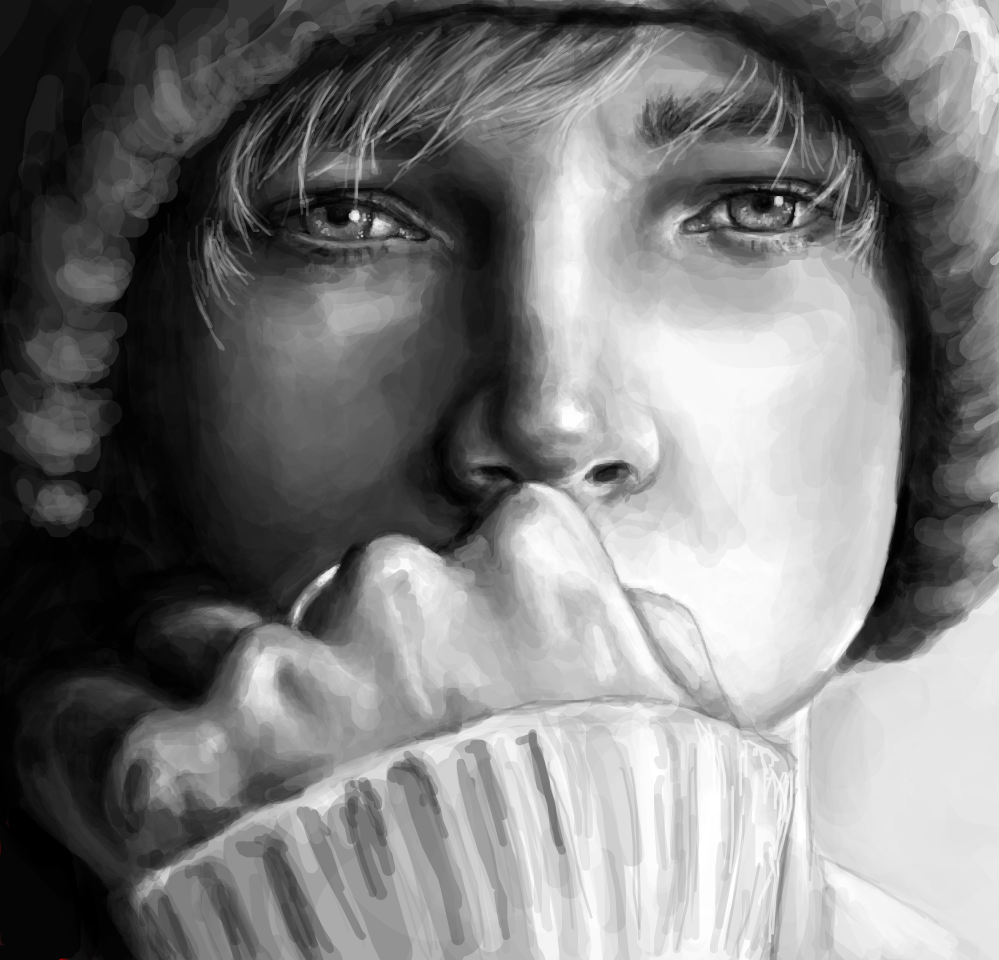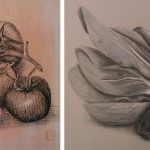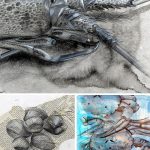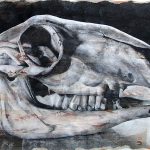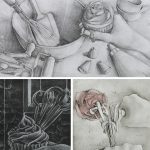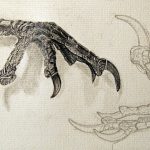Full credit to the StudentArtGuide.com for the excellent advice & links below – modified for our Edexcel course…
How to Approach the IGCSE Art Exam
Students are required to submit:
- The 2017 Theme is ‘Possessions’. How you interpret this is up to you!
- 1 x final artwork – a two or three-dimensional artwork, maximum weight 4.5kgs and maximum dimension in any direction of 750mm, completed within the 10 hour Art Exam. Painting and Related Media students are encouraged to submit a final work that is a maximum size of A2 (larger works must be photographed, prior to sending away for assessment).
- A maximum of 3 x A2 sheets of preparatory work. This is a body of work illustrating a visual response to the theme of ‘Possessions’, using any appropriate colours, tones, mediums, processes or techniques. The preparatory work is completed in the six weeks before the examination and must include direct observation from primary sources, research, analysis and development of ideas.
- See examples in our post ‘A*/A IGCSE Exemplars’.
Step 1
Select your personal topic, relating to the them ‘Possessions’
Recommended time-frame: 1 – 3 days
As a class, brainstorm topic ideas based on the set starting points that are given within the examination paper.
The following recommendations may also assist:
- Brainstorm ideas quickly. Students often take far too long on this process (this is a common mistake made by high school Art students). While it is important to have quality first-hand imagery to work from, you need to use as many of the 8 weeks as possible to complete your preparatory work.
- Select a topic that your Coursework has prepared you for. For example, if you have drawn still-life within your Coursework project, it can be beneficial to select an exam topic that allows you to extend upon these skills. This does not mean you choose something which is exactly the same as your Coursework project (this would stifle and bore you), but rather that you should select something that builds upon your prior learning.
- Select a topic which allows you to work from first-hand observation in the classroom. This is not always possible – particularly for landscape or figure topics – but there are certain advantages to being able to set up and arrange items within the classroom itself. If you wish to work from a scene or subject that cannot be brought into the classroom, it is essential that you demonstrate very early on that you are able to take many high quality original photographs and can easily return to the scene if more are needed. Drawing from second-hand images taken by others – or drawing solely from your imagination – should be avoided at almost all costs. Examiners frequently comment that low grade work is characterized by a “reliance on copying from secondary sources such as the Internet or magazine photographs” (June 2013 Examiner Report), with the strongest work, on the other hand, “always supported by excellent supporting studies with an emphasis on thorough investigation from primary sources”.
The examination paper itself makes this very clear:
Record and develop your ideas from direct observation and experience in order to meet all Assessment Objectives.
- Ensure your subject matter is complex, interesting and varied. For example, three oranges is unlikely to provide sufficient variety to sustain an entire examination submission. Similarly, patterns on a flat surface (a brick wall, a sunrise, silhouetted forms or a cloudy sky, for example) do not offer you adequate opportunity to depict complex three-dimensional form. Look for a topic that is visually interesting and contains a variety of shapes, textures, details and forms.
Work from high quality images
Recommended time-frame: 1-2 days
Find and gather all of the objects, scenes and background materials that you are contemplating including within your project, and take beautiful photographs of these using a high quality camera. Treat these as artworks in themselves. Take close-up details, as well as single objects and whole arranged scenes. Do not worry about your final piece at this point, simply observe and record your subject matter, noticing the shapes, proportions, textures and forms. Select items carefully, so that your work is imaginative and personal.
Once completed, have your teacher approve the photographs (and your topic) and offer advice.
Produce the first prep sheet (A2 size)
Recommended time-frame: 2 weeks
Treat the first preparatory sheet as an opportunity to identify your subject matter and explore this from a range of different angles and scales, using a range of different black and white mediums.
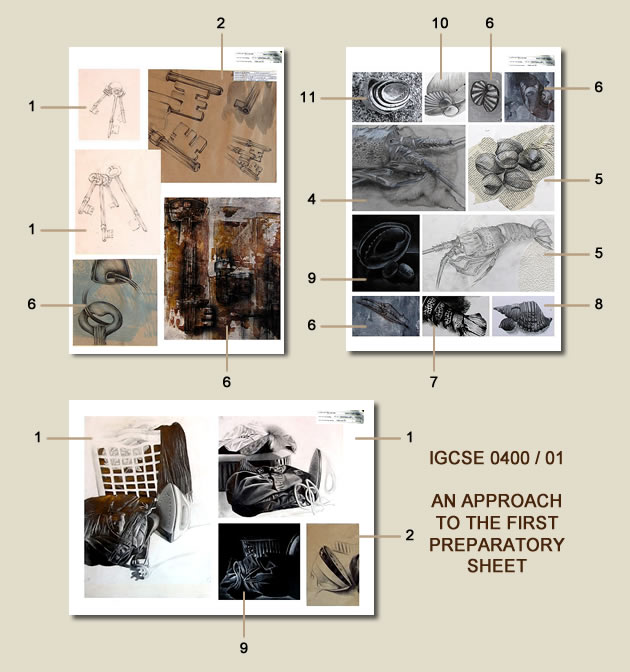
Recommendations:
- Do not worry about forming ‘complete compositions’: instead record, draw or paint interesting objects, combinations of objects, parts of scenes or enlarged details, investigating a variety of appropriate items and background materials from different angles, viewpoints and scales. Try to include every object or scene that you intend to include within your project. Don’t worry about what your final work will look like. Consider this phase ‘visual research’ into your subject matter. Gather, record, research and investigate (through drawing and painting) a variety of appropriate first-hand sources, working from direct observation or your own photographs.
- Focus upon producing strong, realistic, observational drawings and paintings – accurately depicting shape, tone, proportion, perspective, surface/textural qualities and form. Even those who wish to move towards an interpretative or abstract should begin working from observation (if you struggle with this, please read the article with tips for improving your observational drawing).
- Work primarily in black and white (or monochrome). While this is not a requirement, eliminating colour in the initial phase of investigation simplifies this part of your project. It allows you to focus on accurately representing shape, proportion and tone, before moving onto more complex tasks in later prep sheets. Use black and white mediums that you are able to control well, while ensuring that you include sufficient experimentation and a wide enough range of different mediums. We recommend that students complete 4 – 12 artworks, using mediums selected from the list below:
- Graphite pencil on white cartridge drawing paper. These drawings may be partially incomplete – i.e. trailing out to become line only around the edges.
- Ink pen or biro pen on brown kraft paper or coloured paper that fits in with the colour of your subject matter (see our article about types of paper). This might be a line drawing, such as a cross-contour drawing or a continuous line drawing or a more realistic piece that is shaded using techniques such as cross-hatching (see our line drawing article for ideas).
- Black and white colouring pencil on grey paper, with the paper showing through visible for the mid-tone.
- Indian ink and white paint or black and white pencil over a watered down Indian ink ground. This will create an awesome irregular blotchy ground to work over (if you are new to grounds, our article about painting and drawing on grounds is essential reading).
- Graphite pencil, black biro pen and/or acrylic over a textured ground of collaged text or patterned or textured paper. This may be pieces of old wallpaper, or things specific to your topic, i.e. a page from an old recipe book for a food related topic – see this article about painting or drawing on something interesting for more ideas). You may also wish to use white paint for highlights.
- Black biro pen over a ground of splashed ink or smeared acrylic paint, with tone applied using the biro pen, possibly white paint or white pen for highlights. Ensure that any colours used tie in with the with the colours of your subject matter.
- Indian ink applied using a stick. This can be onto ordinary white paper, or something more exciting, such as a torn piece of cardboard box.
- Black and white charcoal on drawing paper.
- White charcoal on black paper.
- Black watercolours or ink on watercolour paper.
- Black and white photographic prints (do not cram your sheet with photographs as a space-filling mechanism, but a few high quality photographs, printed on matt paper, can make it clear you worked from observation and can help the examiners see and understand your starting point).
- Any other black and white drawings or paintings in another medium.
Three examples of A* preparatory sheets completed by IGCSE Art and Design students 0400 / 01, two of which were awarded Top in the World. The numbers correlate to the mediums in the list above.
The examples in the diagram above show the first A2 pages of exam prep by:
- Tarika Sabherwal – A Bunch of Keys (100% /A* – Top in the World), ACG Strathallan College
- Nikau Hindin – Crustaceans and Natural Forms (95% /A*), ACG Parnell College
- Tingjian He (Jim) – An Iron and a Pile of Washing (100% /A* – Top in the World), ACG Strathallan College
Before you begin, take a minute to plan the layout of the preparatory sheet (remembering that the label will be adhered top right) and prepare a series of grounds / drawing surfaces. Use pieces of paper that are slightly larger than necessary, so that they can be trimmed neatly and attached to your A2 sheet once complete.
Remember the emphasis is always quality. You do not need to demonstrate every technique on the above list. It is better to do less, well. Also, note that you do not need to be ridiculously creative: i.e. don’t glue on something absurd just in the effort of being ‘creative’. Always select something that is appropriate for your project and focus on creating awesome observational work (if you struggle with this, please read our article with tips for improving your observational drawing). Ensure you explore, experiment with and use a wide range of appropriate mediums: this helps you gain marks for A04: Selection and control of materials, media and processes.
Finally, if colours are used at this stage, make sure they are considered carefully, following the guidance given below for Prep Sheet Two.
Annotation: Marks are not given for annotation, but it may help you to note down some of your ideas / clarify your thoughts in the spaces in and around your drawings. Examiners comment that high achieving candidates often submit supporting studies that are annotated, with notes evaluating ideas, explaining thinking and “clarifying the journey made“. However, this statement in the June 2013 Examiner Report is particularly valuable:
Some candidates spend considerable time writing about their intentions. There were instances where these descriptions of intent were more extensive than any actual visual research. Clearly, these candidates would benefit from spending less time writing about what they are going to do and more time on actually carrying out the visual research and developing their ideas in a visual form. Brief bullet points would suffice with the main thrust of the supporting studies being a visual and not literary form of communication. Such an approach would enable candidates to achieve higher marks for all of the Assessment Objectives.
To understand more about the sorts of notes that are appropriate in an Art project (if you choose to include any), read our article about sketchbook presentation.
For your inspiration, examples of additional black and white artworks produced by IGCSE Art students have been included below:
Drawings by Georgia Shattky, completed while studying IGCSE Art and Design (89% / A) at ACG Parnell College:
The first of these drawings is completed using black and white colouring pencil on a blotchy, watery acrylic ground; the second is completed using black and white pencil on textured grey paper.
Drawings by Christine Lee, from Macleans College, awarded Top in New Zealand for CIE IGCSE Art and Design, Nov 2013 (98% /A*):
These black and white drawings show initial investigations into the open-ended topic ‘Spiral Structures’. The objects have been cleverly selected around a narrow theme (icing cupcakes) with the repetition of curving and circular forms helping to make the artworks cohesive and well balanced. The objects have intriguing areas of complexity and variation (the intertwining parts of the egg beater; the hand holding the iced cupcake), ensuring that the subject-matter is visually interesting and challenging.
Drawings by Abby Hope Skinner, completed while studying IGCSE Art and Design (A*) at the International School of Paphos, Cyprus:
This combination of drawings – each completed using a different medium – is a perfect example of visual research: beautiful observational studies.
Drawing by Tingian He from ACG Strathallan College, who gained Top in the World for IGCSE Art and Design (100% /A*), Nov 2011:
This drawing of a skull has been completed using black and white charcoal on a mixed media ground of ink and torn paper. Indian ink has been used to paint the black background once the drawing was complete.
A drawing by Hania Cho, completed while studying IGCSE Art and Design (95% /A*) at ACG Strathallan College:
This is a graphite pencil drawing of jewellery arranged against a mirror.
Drawings completed by Nikau Hindin, while studying IGCSE Art and Design (95% /A*) at ACG Parnell College:
Produce second prep sheet (size A2)
Recommended time-frame: 2 weeks
In the second prep sheet, introduce colour and start thinking about composition in earnest. As you begin to explore composition, ensure that you:
- Generate a range of different ideas. Do not set up one arrangement and then just draw it from a few different angles. Or, even worse, don’t produce one composition, and then apply colour using several different mediums (this is a surprisingly common approach which produces a repetitive body of work that bores both you and the examiner). As noted in a recent Examiner Report, weaker candidates have a “tendency to explore only one compositional idea or a very limited selection of images“. Instead, generate multiple arrangements of your chosen objects. Move the items around and position them in different places, testing different compositions to find ones that appear well-balanced and cohesive. Avoid randomly placing items on a page and leaving vast empty areas of empty space. Think critically about the way you compose your work and notice how changes in composition affect the expression of ideas, mood and meaning. To ensure that you produce successful compositions, consider:
- Overlapping objects and including shadows to create a sense of depth and space
- Foreground, middle-ground and background
- Interesting viewpoints – perhaps looking down on things, through things, or from a worm’s eye view
- Perspective and scale – you might wish to create compositions that are focused on enlarged details and parts of compositions, and/or scenes viewed from a greater distance
- The positioning, interaction and balancing of visual elements, such as colour, shape, texture, space etc. If you have a red item at the bottom of your artwork, for example, you might balance this with a few smaller red areas towards the top. Similarly, if you have a busy area of an artwork, you might want to balance this with emptier areas. (Note: exact symmetrical balancing of an artwork is rarely successful). Composition is a big subject that will be discussed in more detail in an upcoming article – in the meantime, analyse your own work carefully and study the composition of artist works to learn successful strategies
- Communicate ideas, meanings and emotion (think about how colour selection and intensity, positioning of items, expressions on faces, dramatic contrasts and other components of your artwork communicate ideas to the viewer). Note: when it comes to colour selection, it is usually better to select a limited palette that supports the ideas and themes expressed, rather than to use every single colour (see the complete IGCSE Art Exam projects shown at the end of this article for examples).
- Learn from artists. Learning from artist models is the best and easiest way to learn new techniques and compositional approaches. You may find it easiest to learn from artists that are the same or similar to the ones explored in your Coursework project. This concept has been discussed in our article about the AS Art Exam:
One helpful strategy can be for students to follow a similar development process to that used in their Coursework (i.e. using the same artist models and a similar pattern of developing composition), as this allows students to work much faster. It means students have to ‘think’ and worry less, and simply put all of their effort into producing stunning artwork within the short time frame given. As the subject or theme is of course totally different (because it is selected from the examination paper), students are thus excited and invigorated about their work, despite the processes being very similar to their Coursework, at least in the initial stages. As the work progresses, the new topic usually drives the work in a new and exciting direction, so the final pieces are quite different.
To understand ways that your work can be influenced by an artist’s work, please read our article about development and study the examples of student project at the end of this article.
When selecting artwork to study, it is worth remembering that:
- The artist does NOT need to use the same subject matter, but the work must be relevant to your project. For example, you might be inspired and learn from the way an artist communicates ideas, approaches composition or uses a technique. The June 2013 Examiner report comments that low achieving candidates often included an artist who did not inform their work but acted as a “‘bolt on’ addition in an attempt to satisfy the Assessment Objectives“. In other words, do not study an artist for the sake of it; instead, the artist work must influence and inform your own artwork.
- Long-winded written analysis is not required. As is mentioned earlier, annotation is not necessary. In the current 8 week format, every speck of your energy should be spent on producing quality original artwork. A small colour copy of an artist’s work, correctly referenced and credited, along with brief bullet-points analysing composition, technique and ideas is all that is needed (if any writing is deemed necessary at all). It is the integration of this learning into your own practical work that matters.
- Explore and experiment with a wide range of mediums. We recommend completing 4 – 8 works, selecting from the list below:
- Coloured pencil
- Coloured pencil with black biro pen
- Pastels on white paper or acrylic wash
- Carandache crayon over acrylic wash
- Watercolour on water colour paper
- Acrylic paint on an acrylic ground
- Acrylic painting on a variety of textured surfaces such as unstretched canvas or textured paper
- Colour photographs
- Any other coloured medium
Produce final prep sheets (size A2)
Recommended time-frame: 1-2 weeks
In the final sheets (or sheet) of prep work, your challenge is to take your best initial compositional ideas and develop these towards a successful final piece. By the time your prep work is complete, you must know exactly what you hope to produce in the exam and be confident that you can complete this in the given time. Before beginning this part of your prep work, it can help to ask:
- Which mediums am I most skilled with? Which mediums can I use quickly and confidently? This is an important consideration, as you are likely to find it challenging to complete a great artwork within the 8 hour examination session (this article about how to work faster may give you some good strategies). The medium/s you choose for your final work can be black and white or coloured – or a combination of both. There is no hierarchy of mediums: students are just as capable of gaining an A* with an exceptional graphite pencil drawing as with an exceptional acrylic or mixed media painting. What matters is the quality of the work: your strength and skill with this medium and how convincingly you communicate ideas. If you are uncertain, or are torn between a few different mediums, continue to trial these subsequent works until you are sure – but do not leave this decision until the last minute. To be most useful, the final pieces of development work should be completed in the same medium that you intend to use within the examination, so that you have sufficient opportunity to practise and refine your skill. As noted in the June 2013 examiner report:
Some candidates chose to use a media for the examination that they had little experience with instead of using the media that they had created their strongest work with whilst producing their supporting studies.
- Which of my compositional ideas are the best so far? Look carefully at the work you have completed. Of your initial ideas, which ones show the most promise? Which drawings / paintings are most successful? Why? The examiners often make comments that final works are not as good as some of the prep pieces. Think carefully about the objects and scenes that have drawn, and how these have been successfully combined together so far. Establish what is working, and what can be improved.
Understanding development
Once you have decided which mediums and compositions hold the most promise, you need to produce new work developing these ideas (refining, trialling, exploring and improving your compositions, technique/s and use of media) showing the visual journey towards an original final piece. Your final piece may be completely abstract, surrealist, impressionist, realist or any other style or combination of styles, as long as your project begins with first-hand observation. ‘Development’ is a commonly misunderstood term (read more about what development means). In essence, your work must show a coherent journey from an initial idea to the final piece – a journey that involves exploring and experimenting with mediums and techniques, refining approaches to composition and absorbing ideas from other artists, environments and cultures. These statements from the October 2013 Examiner Report help to explain this further:
A number of candidates did not understand the importance of ideas development choosing instead to present their supporting studies as a series of unrelated finished pieces which lacked a cohesive journey.
In some cases it was a real pleasure to see sheets of research where one study had been linked to another across the whole sheet, clearly showing the progress of an idea or technique.
The best way to understand what develop means is to look closely at how the work in the IGCSE Art Exam projects below changes between the start and end of the project. (Viewing the other featured Art projects on this website can also help, as most show the same process of development).
In this final stage of your project, the number and quantity of works produced will vary considerably between students. At this stage you are likely to produce between 2-8 artworks developing ideas, primarily using your chosen medium, which may or may not be supported by photographs, composition sketches, media trials and (as described above) brief artist analysis. This very last segment of prep work should lead naturally to the work you complete in the exam. Note: Do not attempt to complete a whole ‘practice’ version in advance, but plan your final piece enough so that you don’t waste any examination time thinking about what to do. Your preparation work should allow you to practise all the different components of the final work (perhaps not in exactly the same way, but enough that you are confident you can execute every aspect of it). Trial setting up the still life you will draw from and/or pre-print high-quality photographs to work from. You should be able to walk into the examination, set up your equipment and still life if necessary and begin working immediately, without any ‘thinking’ about what you will do.
Final preparation
In the weeks leading up to the final exam, you need to:
- Decide what shape, format and kind of paper you will work on.
- Prepare a ground if needed. You are permitted to prepare the ground (the undercoat) in advance, which may also include patterned or textured paper. An undercoat must not include any outlines or preliminary drawing.
- Ensure all the equipment you need to use is ready and working – pencils sharpened / paint tubes full etc.
- Arrange, trim and attach your work to the preparatory sheets (some schools have students do this in a supervised workshop after exams – more discussion about this approaches to mounting and displaying here).
- Ensure that labels are correctly filled out with your Centre number, candidate number, name and question number and attached to the top right-hand front corner of each preparatory sheet (your teacher is likely to help you with this).
- Ensure all smudgeable work is sprayed with fixative or something similar!
- Organise the supporting work so that it shows the research, exploration of ideas, and experiments with media and materials, and shows the ‘development journey’. As noted in the June 2013 examiner report, “candidates who simply pile the work up without any consideration for presentation are doing themselves a disservice“.
The final 10 hour IGCSE Art examination
Bring your supporting work to the exam! If you forget to bring it to your first examination session, you will not be allowed to submit it later. This means it is virtually impossible for you to pass the exam.
Immediately before the exam is to start, set up your work station. Approximately half an hour beforehand, you should be let into the room to set up your equipment, materials and still-life (if needed). You should set up everything you need and should not have to share basic equipment with anyone else. Put your supporting sheets of work neatly beside you to refer to. Note: You are not allowed access to any books, magazines or artwork of other artists. Artwork may be on the walls, but you must not access this, copy it or try to submit it as your own.
Once the exam starts, you may move around the room as needed, to empty your water jar / get additional materials etc, although this should be minimised to reduce disturbance of others.
Tracing is rarely allowed and only in specific situations, for example, when incorporating a repeat pattern or motif that.
Technical assistance is allowed if you need it, such as assistance firing ceramics, welding metal sculptures or pouring out photographic chemicals, however at no stage can you ask for any advice about your art or design work.
At the end of the examination, place the final examination piece on top of the supporting studies and fasten all your work together in the top left-hand corner.
Outstanding examples from other schools
Nikau Hindin 95% – ACG Parnell College, 2007 (read more about Nikau’s IGCSE Art exam):
This IGCSE Art project is realistic throughout. After completing artworks in a range of mediums, Nikau focuses on watercolour at the end of her second preparatory sheet, developing ideas towards her final piece.
Tingjian He (Jim) 100% – Top equal in the World, ACG Strathallan College, 2011 (read more about Tingjian’s Art Exam):
Tingjian’s project begins with highly realistic work depicting a washing basket and iron and gradually becomes more expressive and gestural, incorporating several creative mark-making techniques such as scraping paint across the cardboard surface in order to abstract the washing basket form. Although no annotation is included, it is evident that Tingjian’s work has been influenced and inspired by the work of contemporary artists.
Tarika Sabherwal 100% – Top equal in the World, ACG Strathallan College, 2011 (read more about Tarika’s IGCSE Art exam):
Tarika’s work shows a clear journey from strong observational work to abstract pieces. The influence of contemporary artists is evident, without the need for annotation. It is worth noting that the pieces gradually become larger as the folio progresses – an approach if often helpful for students.
Assessment criteria
AO1 Gathering, recording, research and investigation (20%)
(a) Investigate and research a variety of appropriate sources
- Does your project including drawings and paintings of objects and scenes that include a variety of different shapes, sizes, details, patterns, textures and surface qualities?
- Have you investigated your subject matter in-depth, exploring things from different angles, different scales and arranged in different ways?
- Have you chosen an appropriate collection of objects / scenes which are personally relevant, interesting / complex and indicate a perceptive response to a theme?
- Have you undertaken research of relevant artists and is this reflected in your own work?
(b) Record and analyse information from direct observation and/or other sources and personal experience
- Is your project based upon things that you can see and touch in real life?
- Have you produced high quality observational drawings and paintings, accurately representating shape, proportion, detail, perspective, tone, space (through overlapping, inclusion of shadows, perspective etc)?
- Have you used a range of appropriate mark-making techniques to replicate interesting surfaces and textures, such as shiny metal, transparent materials and/or hair?
AO2 Exploration and development of ideas (20%)
(a) Explore a range of visual and/or other ideas by manipulating images
- Have you come up with a range of different compositions throughout your project, arranging your objects / scenes in different ways?
- Have you thought about how images are cropped?
- Have you chosen colours thoughtfully?
- Have you used composition as a tool to test, explore and communicate ideas related to your topic?
(b) Show a development of ideas through appropriate processes
- Is your project cohesive (visually connected) and based upon one topic?
- Have you arranged your work in an organised way so that it shows the journey of how you got from start to finish? Is it clear how you arrived at your final piece, and how this relates to earlier work?
- Does your work morph and change, with your compositions becoming more resolved / refined towards the conclusion of your project?
AO3 Organisation and relationships of visual and/or other forms (20 marks)
(a) Organise and use visual and/or other forms effectively to express ideas
- Does your artwork convey emotion or communicate something about the world?
- Have you chosen colours / shapes / lines / textures / forms etc intentionally, with thought about how these affect the mood and message or your work?
- Are your compositions imaginative and creative, expressing ideas in an original and personal way?
(b) Make informed aesthetic judgements by recognising the effect of relationships between visual and/or other forms
- Are the shapes, lines, textures, spaces, colours, tone and other visual elements in your work positioned and used in such a way that the work appears well-balanced and pleasing to the eye?
- Have you selected appropriate mediums?
AO4 Selection and control of materials, media and processes (20 marks)
(a) Show exploration and experimentation with appropriate materials
- Have you conducted a wide range of appropriate exploration and experimentation with materials? For example, have you used mediums in creative ways, painted on different materials, used lots of different mediums, and mixed these in different ways?
- Are the mediums you have chosen appropriate for your topic?
(b) Select and control appropriate media and processes, demonstrating practical, technical and expressive skills and intentions
- Have you demonstrated an ability to control mediums well, with excellent fine motor skills, in a range of different mediums? For example, can you use the techniques you have chosen skilfully? Can you:
- Replicate fine detail if required?
- Create sharp, tidy edges if needed?
- Blend tone smoothly or with control?
- Dash, splash and spray paint etc, if required, in beautiful and purposeful ways?
- Have you selected mediums and techniques that showcase your strengths and present your ability in the best light?
AO5 Personal vision and presentation (20 marks)
(a) Show personal vision and commitment through an interpretative and creative response
- Is your work personal and creative?
- Is your project extensive, comprehensive and thorough – suggesting that you are a committed, dedicated student with personal vision?
- Have you taken time and care with your work?
(b) Present an informed response through personal evaluation, reflection and critical thinking
- Has your work been informed / influenced by relevant artists and/or creative practitioners?
- Did you continually evaluate your own work in order to work out how to proceed (and is this obvious from your practical work)? In other words, is each new piece the result of critical analysis of the work that has come before?
t
